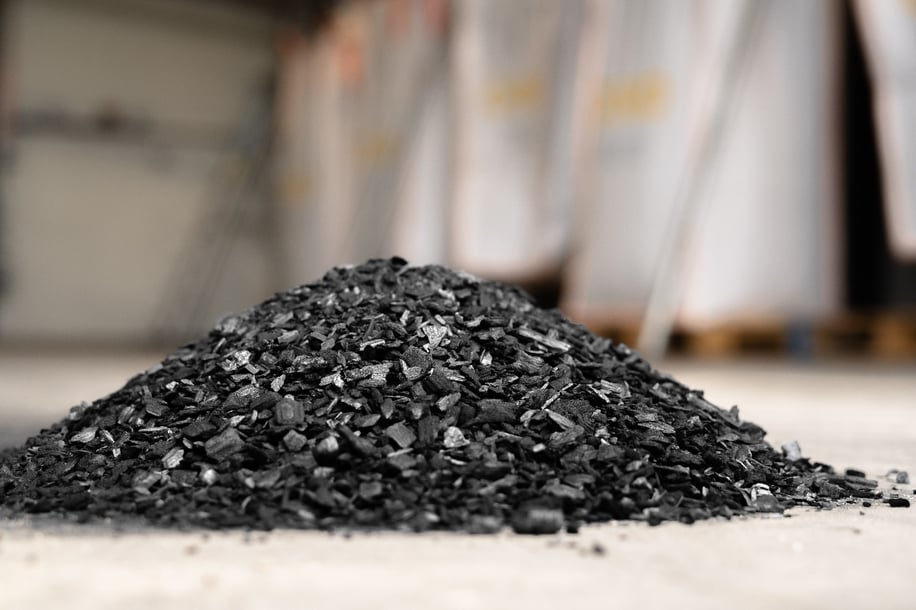
In our last article, we delved into the essential aspects of implementing effective carbon neutrality strategies within the corporate ecosystem. We notably touched upon the key principles that are at the heart of net-zero aligned carbon offsetting.
While complying with these principles is an important first step, finding the adequate solutions among a myriad of offsetting options can be a daunting task. In this context, one solution that is gaining increasing momentum as a reliable carbon removal method is biochar, a carbonized organic matter formed under high heat and low oxygen conditions through a process called pyrolysis.
Biochar can be used in numerous processes and industries, with varying degrees of performance. It can be produced from a range of feedstocks, including wood materials, waste biomasses from tropical regions, municipal sludge as well as nut and fruit shells, thanks to more optimized transformation processes. Biochar can be produced through different systems, ranging from the traditional cookstove to large industrial processes but not all methods can equally qualify to receive carbon credits. To claim high carbon removal credentials, biochar needs to have a fixed and stable carbon content, meaning non degradable over time, or only to a very limited extent. In addition to producing biochar, the biomass pyrolysis generates a renewable gas which can be transformed into heat, electricity or hydrogen and used for self-consumption or replacing fossil gases.
Information about the biochar market has remained unavailable for a while as most data was private and thus difficult to access, leaving most organisations and businesses unaware of the growing opportunities around this relatively new carbon removal method. To address this information vacuum, Accend teamed up with GECA Environment to issue a 80-page report uncovering all the latest information and facts about the biochar market. With this introductory guide, we sought to help project developers and investors make more informed decisions on biochar credits trading, reviewing four methodologies, two of which are still under development.
Among our conclusions, we found that the body of knowledge around biochar has grown massively since the 2010s, allowing for the development of new methods that have boosted its credibility as a carbon sequestration tool. Another finding is that thanks to recent technology developments, biochar can now be produced consistently and qualitatively at a commercial scale. In addition, the climate change policy ecosystem and the corporate quest for more credible carbon credits through actual removals also mean the market value of biochar is projected to increase from an estimated $15m in 2022 to as much as o $200m by 2025.
Looking ahead, the carbon community should definitely stay abreast of future developments in the biochar market because the growth prospects are very high, with many times more demand than supply.
Biochar in addition complies with the seven “high quality offset” criteria of the carbon voluntary market. Indeed, according to a 2020 discussion paper from Oxfam, the technology scores well on the 7 principles which include guaranteeing additionality (1); avoiding double-counting (2), being verifiable (3) and durable (4), complying with the do no harm principle (5), producing co-benefits (6) and avoiding leakage (7).
On the co-benefits front, biochar really has a lot of cards to play. For one, it can act as a soil enhancer, improving nutrient and water retention, thereby enhancing soil fertility up to 100% according to research findings. Biochar also contributes to a more circular economy as it is a way to leverage biomass which would otherwise be left to decay or burn. It can also be used as a substitute to activated carbon to intercept contaminants thanks to its high sorbent properties. Biochar also has the potential to increase certain materials’ physical properties such as concrete, plastics and asphalt, decreasing the need for raw material input and their related carbon emissions. Last but certainly not least, the carbon in biochar has a half-life which can last up to millennia, durably and sustainably keeping CO2 out of the atmosphere. “Biochar is simple, energy efficient, and doesn’t consume land, water and metals”, says Philippe Ciais, climatologist from the laboratory of climate science and environment in France, a country where biochar is making headlines thanks to major start-up investments.
These high-quality components make biochar more expensive than carbon offsetting methods like reforestation or soil carbonation but it remains competitive compared to other engineered solutions especially in view of its numerous co-benefits. Both government and corporate buyers have thus embraced biochar as part of their diverse carbon removal portfolios. In the realm of carbon offsetting, credit buyers indeed acknowledge that there is no single panacea and generally opt for options that vary in terms of price, geography, co-benefits, etc.
To remain on its upward trajectory, and move from niche to mainstream, biochar will have to overcome the four limiting factors we identified: its complexity (1), the fact that it is still relatively unknown on the market (2), the existence of only two verification methodologies so far (3) and the cost and length of project development (4).
Looking ahead, the carbon community should definitely stay abreast of future developments in the biochar market because the growth prospects are very high, with many times more demand than supply.
On top of the three existing methodologies (from Verra, Puro.earth and the European Biochar Certificate now owned by Carbon Standards International), another less-known carbon standard-setting organisations are in the process of developing their own methodologies. Against this backdrop, biochar producers will have increased opportunities to demonstrate the credibility of their projects, including through life cycle assessments accounting for all the emissions caused by the entire manufacturing process. While major industry groups and businesses from the technology, finance and insurance world have already bet high on biochar, more corporations are expected to follow suit, with several new procurement processes already underway.